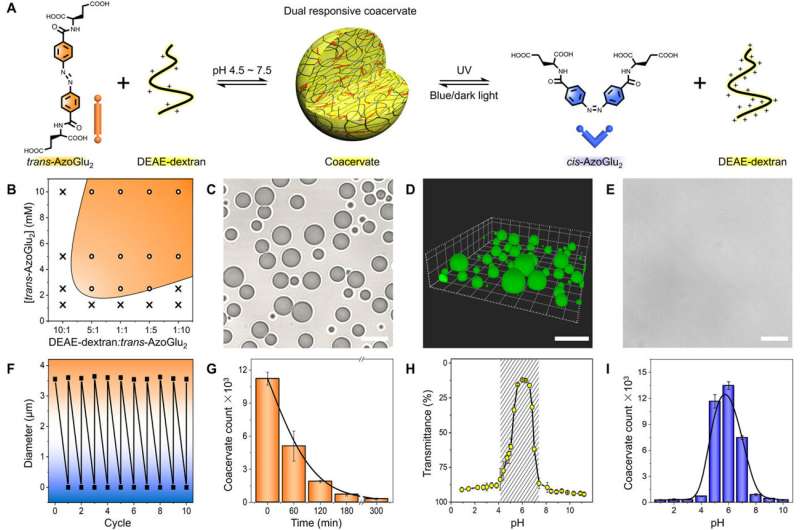Researchers construct lab-made 'cells' with organelles to mimic cellular signaling

Cells are compartmentalized microreactors that integrate spatially organized organelles in a confined space to afford biochemical reaction networks.
Hierarchical lab-made 'cells' with compartmentalized organelles can serve as a model of cellular organization for the study of metabolic reaction network and the design of biological computation.
In a study published in Science Advances, the research group led by Prof. Qiao Yan at the Institute of Chemistry of the Chinese Academy of Sciences, and Prof. Lin Yiyang at Beijing University of Chemical Technology, developed a complex protocell model made of proteins and stuffed with tiny liquid coacervate droplets resembling cellular substructures can respond to changes in their environment, similar to living cells.
This light and pH-sensitive microdroplets are prototype of membraneless organelles formed by short, light-sensitive molecules and long, pH-sensitive polymers via liquid-liquid phase separation. The tiered protocells are capable of harvesting biomacromolecules (e.g., DNA and proteins) by condensing them into liquid droplets, and recruiting small molecules from surroundings, which allows for active control of enzyme-catalyzed reactions.
These subcompartments of protocells can sense a variety of extracellular signals (e.g., light, pH and chemical species), take actions and adapt their physicochemical behaviors, which can be utilized to design Boolean logic gates (NOR and NAND) using biochemical signals as inputs.
The information-processing ability could allow researchers to program the protocells as if they were computer chips, to control chemical reactions.
More information: Wenjing Mu et al, Membrane-confined liquid-liquid phase separation toward artificial organelles, Science Advances (2021). DOI: 10.1126/sciadv.abf9000
Journal information: Science Advances
Provided by Chinese Academy of Sciences



















